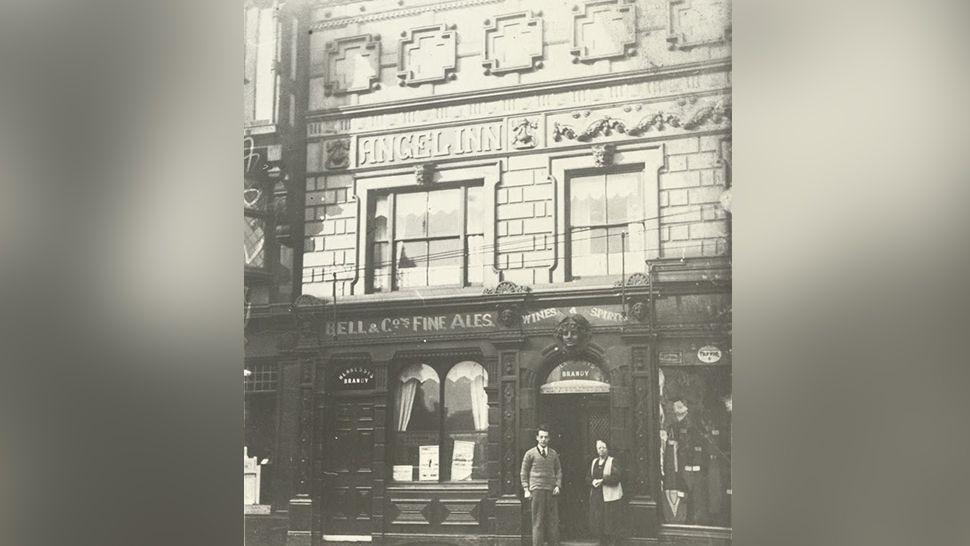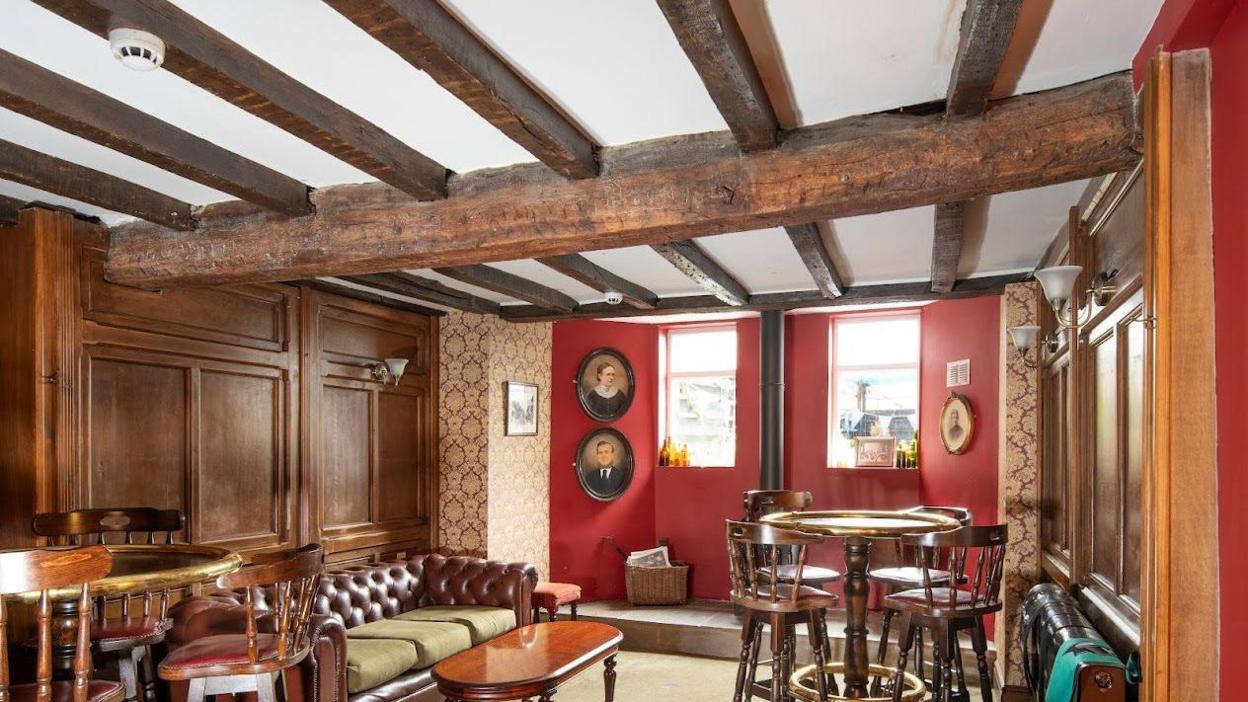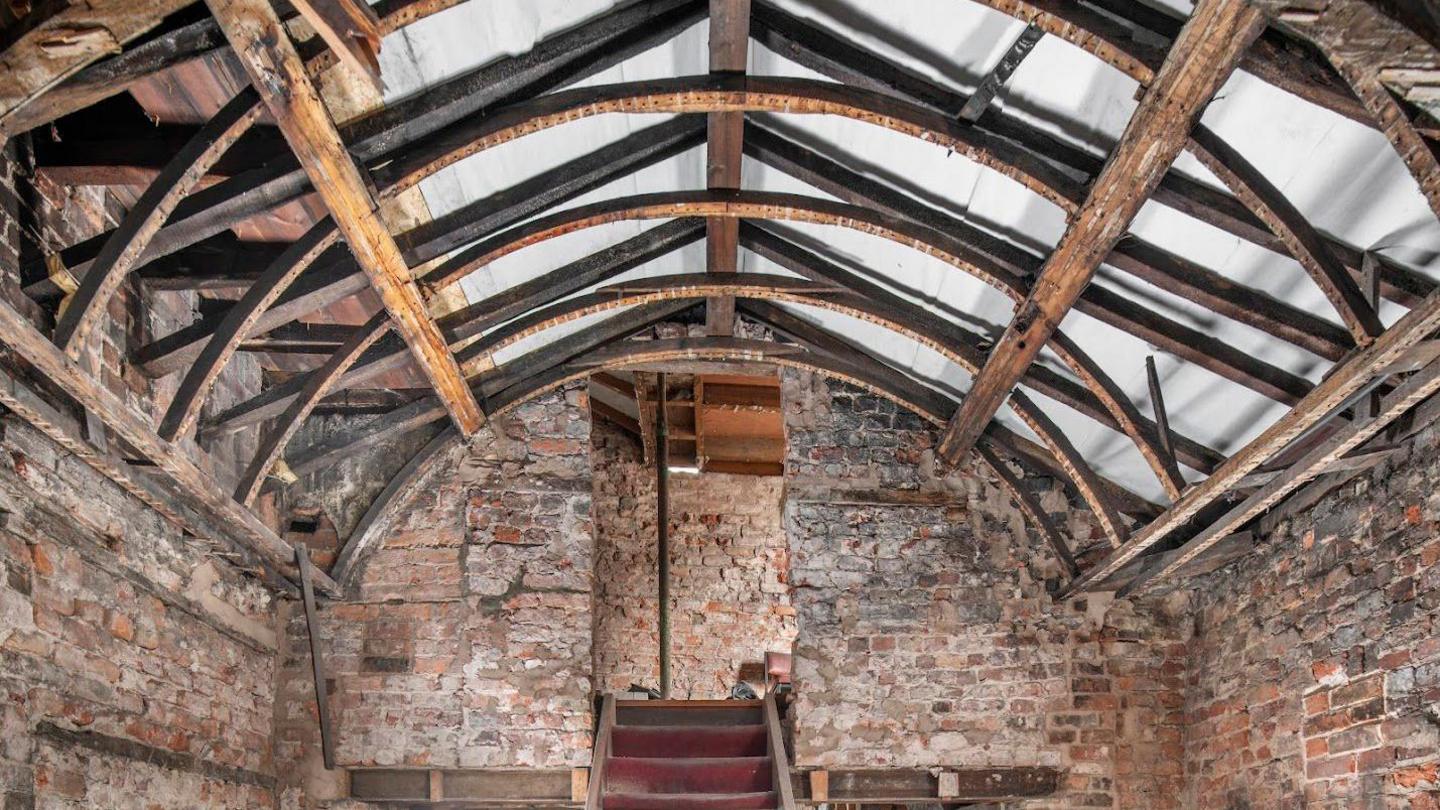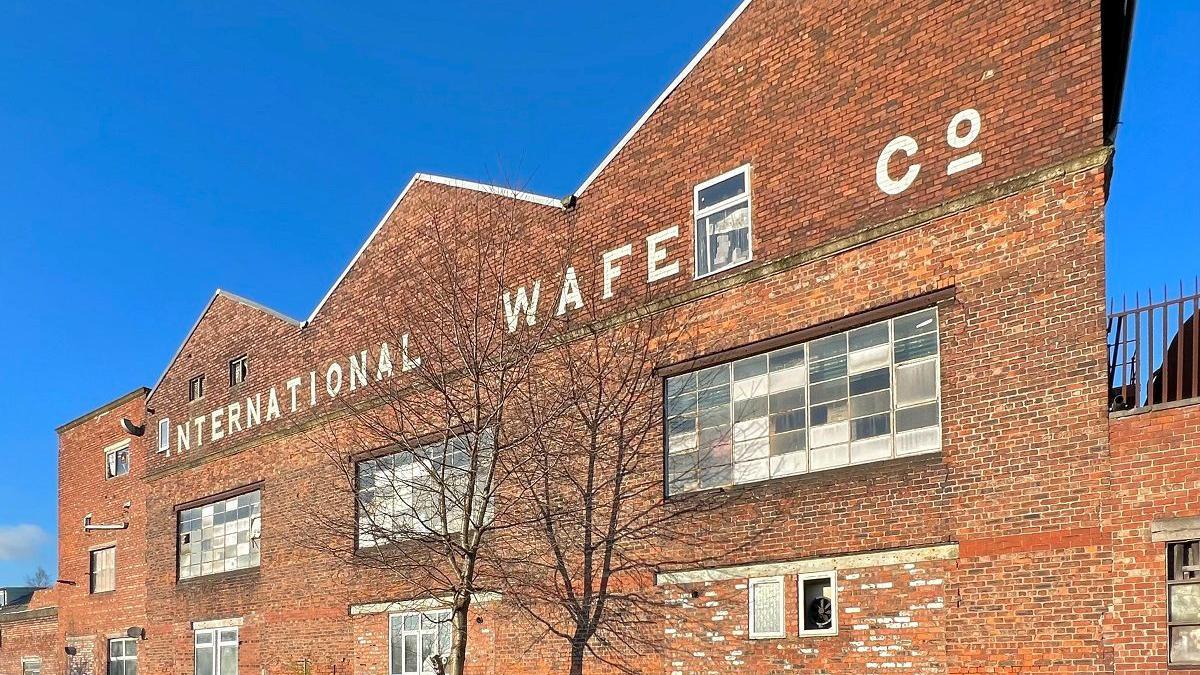Historical town pub granted listed status

The Angel Inn was built in the 16th Century
- Published
A 16th Century pub which has a floorboard made from a tree that was growing during the time of the Domesday Book has been granted listed status.
The Angel Inn in Stockport, Greater Manchester, has been given Grade II listed status by the Department for Culture on the advice of Historic England (HE).
Built in the 16th century, several timbers within the inn's wooden frame date from the 1400s when The Wars of the Roses raged between the Houses of Lancaster and York.
Rare surviving wattle-and-daub – a technique that had died out by the 18th century - fills gaps in the building's frame.

The Angel Inn is one of Stockport's oldest buildings
Using dendrochronology - a method of dating wood - has proved one floorboard was cut from a tree that was alive in 1086, the year the Domesday Book was completed.
HE said records showed the Angel Inn name dates from as early as 1769, though the site's hospitality roots extend further, with references to "Cotterell's inn" used for sequestrators' meetings in the 1640s, who met to organise the confiscation of property of supporters of King Charles I during The English Civil War.
During the late 18th and early 19th centuries, the inn became a cultural hub, hosting meetings, concerts and theatrical performances including the Stockport Philharmonic Society.
By the mid-19th century, the building had been divided into three separate commercial units. Number 22 became home to R.H. Rostron, a prominent Stockport draper after whom Rostron Brow is named. Number 21 was partially occupied by Samuel Chadwick, a wholesale tea and coffee dealer.
The elaborate plasterwork facade added in 1886, designed by architect TH Allen - who also designed the Grade II listed Bank of Stockport opposite - features angel heads with wings forming window keystones, a nod to the building's long history as the Angel Inn.

Rare surviving wattle-and-daub fills gaps in the building's frame
Crispin Edwards, HE listing adviser, said: "The Angel Inn not only preserves historic timbers and building materials from the 16th century and earlier, but its later alterations also tell the story of its development from inn to cultural venue to multi-use commercial property.
"The survival of a floorboard from a tree that was growing during the time of the Domesday Book is truly remarkable."
Navendu Mishra MP for Stockport said the listing was a "proud moment for our town".
"It's one of Stockport's oldest buildings and has played many roles in the town's history.
"From its role in the English Civil War to hosting concerts and community events, The Angel Inn has long been a cornerstone of local life."
Stockport Heritage Trust said they were "pleased to acknowledge that another medieval addition to our market place has received the recognition it deserved".
Get in touch
Tell us which stories we should cover in Greater Manchester
Listen to the best of BBC Radio Manchester on Sounds and follow BBC Manchester on Facebook, external, X, external, and Instagram, external and watch BBC North West Tonight on BBC iPlayer.
Related topics
Related internet links
- Published23 November 2024
